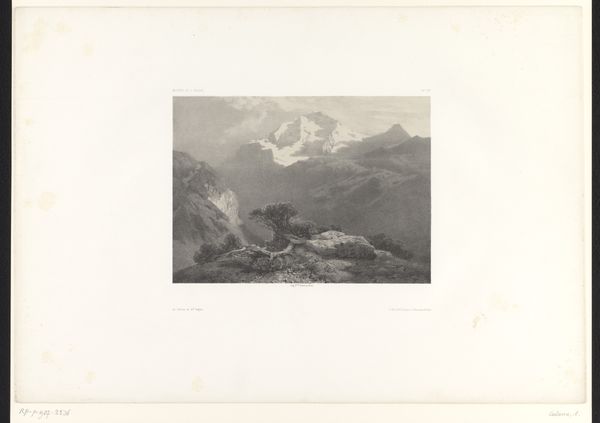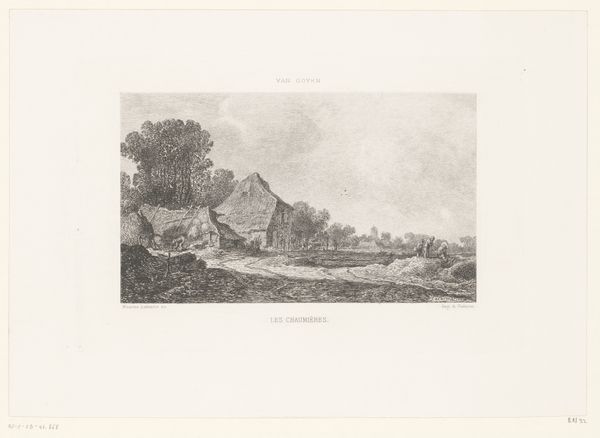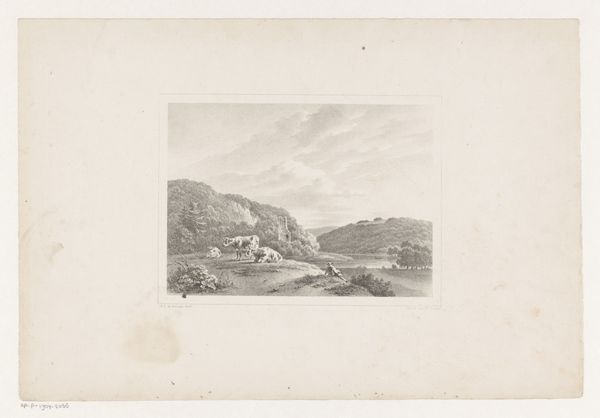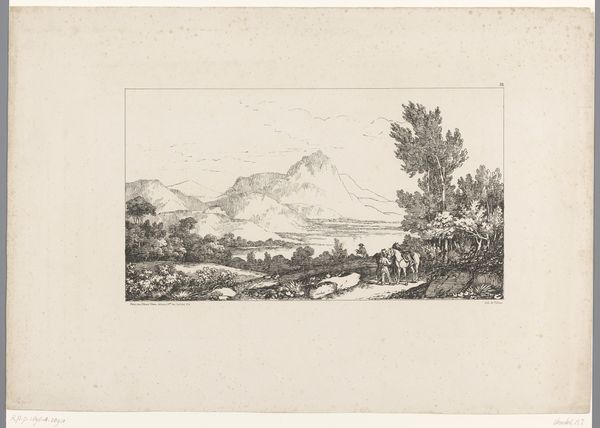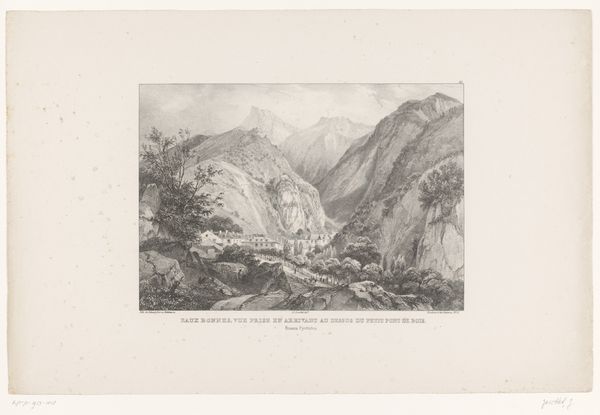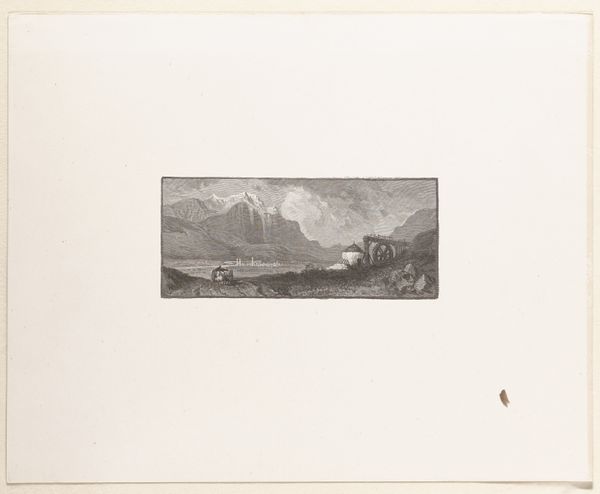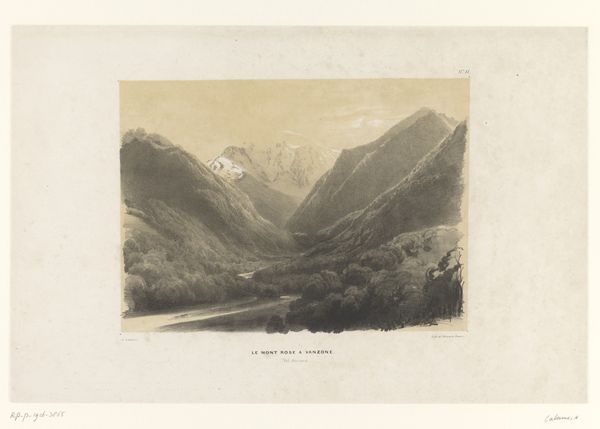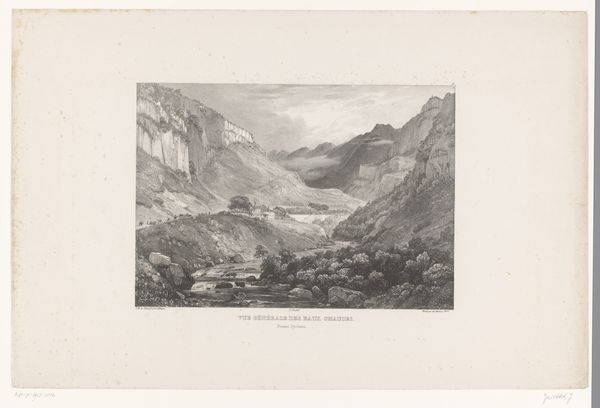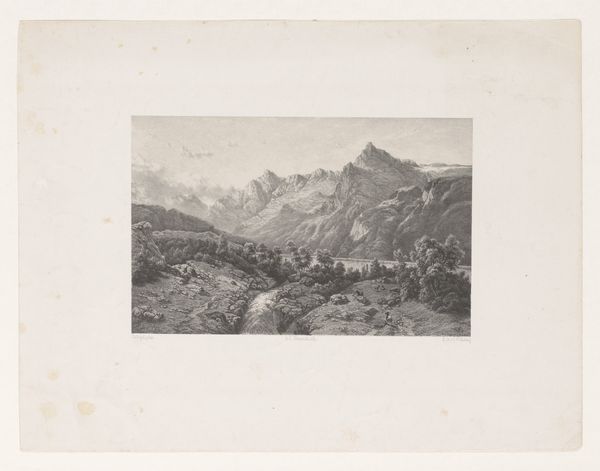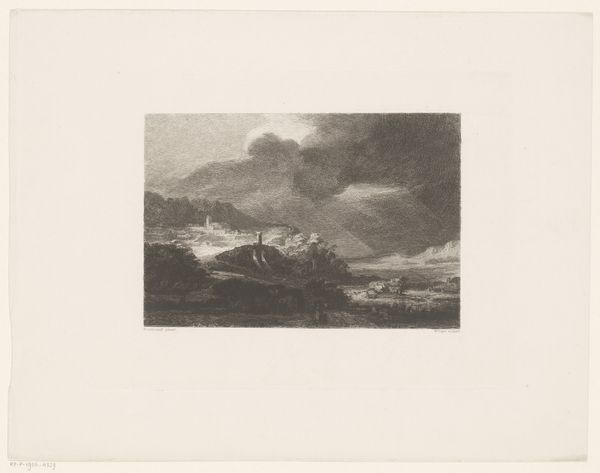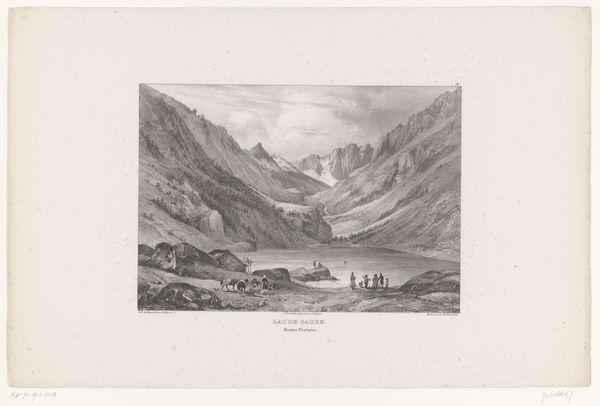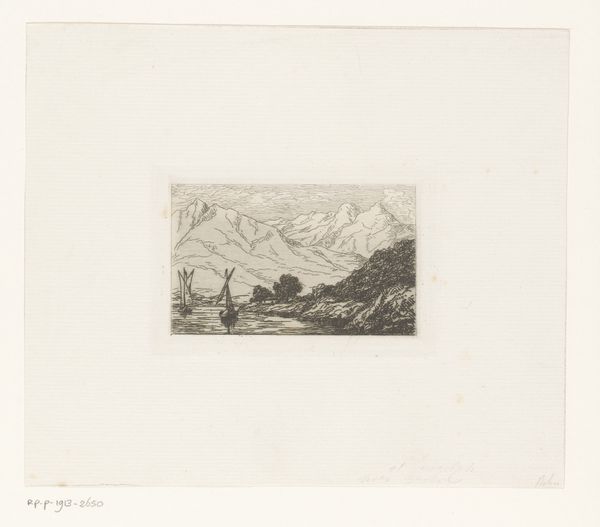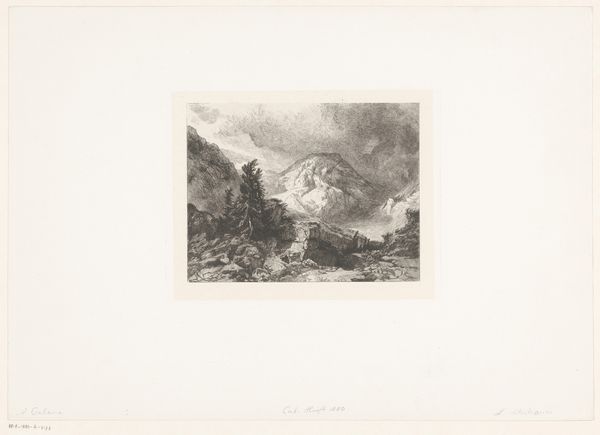
Dimensions: height 225 mm, width 287 mm
Copyright: Rijks Museum: Open Domain
Editor: Here we have "Berglandschap met man te paard en een vrouw met geiten" (Mountain Landscape with a Man on Horseback and a Woman with Goats) by Auguste Numans, dating from between 1833 and 1879, rendered in pen and pencil. I'm immediately drawn to the sweeping vista, the sense of almost cinematic scope achieved through simple lines. What strikes you most about this landscape? Curator: The power of Romantic landscapes like this resided in their ability to evoke the sublime. Think about the social context. As urban populations boomed, landscapes represented an escape from the industrialized world, a connection to something pure and untamed. Notice how Numans frames the figures—small and somewhat anonymous—against the grandeur of the mountains. How does that visual choice impact our understanding? Editor: It almost shrinks them, right? Makes them seem less significant than nature itself. As if we're meant to see humanity within a larger, overwhelming world. Do you think this reflects anxieties of the time? Curator: Absolutely. There was a growing sense of human insignificance in the face of nature's power, a power often depicted as both awe-inspiring and potentially destructive. Consider, too, how the art market fueled the demand for such landscapes. Wealthy patrons collected these scenes, not just as decoration but as statements of cultural status, a vicarious claim to the sublime. The landscapes then served a symbolic role beyond their aesthetic beauty. Editor: That makes a lot of sense. I guess it wasn't just about pretty scenery then! It’s fascinating to think about the landscape being a form of cultural capital. Curator: Exactly. It reveals how deeply entwined art is with social and economic forces. By appreciating these historical dynamics, we can critically interpret Romanticism's aesthetic power. Editor: This really shifts my perspective! I'm starting to think about art less as isolated beauty and more as a conversation piece within a larger cultural story.
Comments
No comments
Be the first to comment and join the conversation on the ultimate creative platform.
